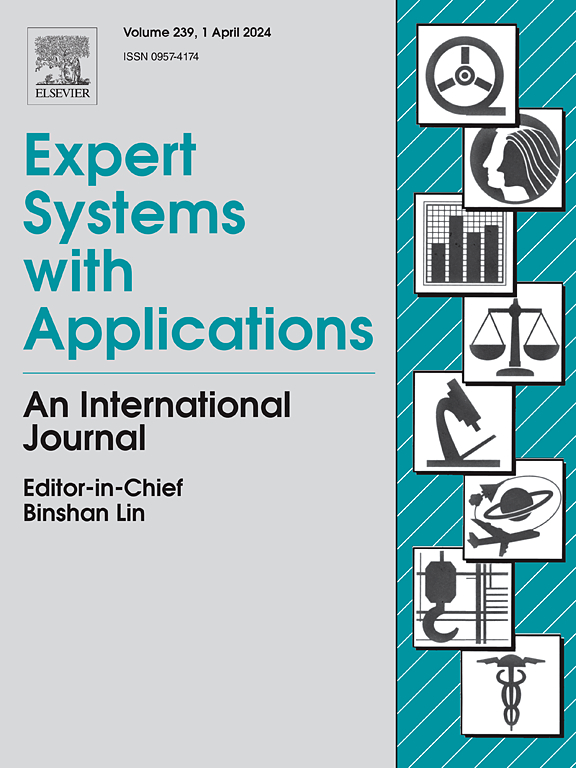开发基于深度学习的高螺距螺旋计算机断层扫描成像算法
IF 7.5
1区 计算机科学
Q1 COMPUTER SCIENCE, ARTIFICIAL INTELLIGENCE
引用次数: 0
摘要
高螺距 X 射线螺旋计算机断层扫描(HCT)成像技术能够缩短扫描时间,从而降低物体(被成像物体)可能受到的辐射剂量,因此最近在生物医学领域备受关注。然而,这些高间距 CT 扫描中的不完整数据导致重建质量下降的问题依然存在,从而限制了其应用。针对上述问题,本文介绍了我们针对基于 X 射线传播的高间距成像 HCT(PBI-HCT)重建开发的基于深度倾斜(DL)的新型算法 ViT-U 的研究。ViT-U 由视觉转换器(ViT)和卷积神经网络(即 U-Net)两个关键处理模块组成,其中 ViT 处理数据域的缺失信息,U-Net 增强重建域的后数据处理。为了进行验证,我们设计并进行了低密度生物材料样本和生物组织样本的模拟和实验,以生物医学应用为例,然后分别在 3、3.5、4 和 4.5 不同间距下检验了 ViT-U 的性能,以比较辐射影响和重建质量。结果表明,高间距 PBI-HCT 可使剂量减少 72% 至 93%。重要的是,我们的结果表明,ViT-U 能有效去除缺失的楔形伪影,从而提高高间距 PBI-HCT 成像的重建质量,表现出卓越的性能。此外,我们的结果还显示了 ViT-U 的卓越能力,它能从螺旋间距值高达 4 的高间距图像中获得高质量的重建(从而大幅降低了辐射剂量)。综上所述,我们基于 DL 的 ViT-U 算法不仅能以较低的辐射剂量实现高速成像,还能保持高质量的成像重建,从而为生物医学成像应用提供了巨大的潜力。本文章由计算机程序翻译,如有差异,请以英文原文为准。
Development of A deep Learning-based algorithm for High-Pitch helical computed tomography imaging
High-pitch X-ray helical computed tomography (HCT) imaging has been recently drawing considerable attention in biomedical fields due to its ability to reduce the scanning time and thus lower the radiation dose that objects (being imagined) may receive. However, the issue of compromised reconstruction quality caused by incomplete data in these high-pitch CT scans remains, thus limiting its applications. By addressing the aforementioned issue, this paper presents our study on the development of a novel deep leaning (DL)-based algorithm, ViT-U, for high-pitch X-ray propagation-based imaging HCT (PBI-HCT) reconstruction. ViT-U consists of two key process modules of a vision transformer (ViT) and a convolutional neural network (i.e., U-Net), where ViT addresses the missing information in the data domain and U-Net enhances the post data-processing in the reconstruction domain. For verification, we designed and conducted simulations and experiments with both low-density-biomaterial samples and biological-tissue samples to exemplify the biomedical applications, and then examined the ViT-U performance with varying pitches of 3, 3.5, 4, and 4.5, respectively, for comparison in term of radiation does and reconstruction quality. Our results showed that the high-pitch PBI-HCT allowed for the dose reduction from 72% to 93%. Importantly, our results demonstrated that the ViT-U exhibited outstanding performance by effectively removing the missing wedge artifacts thus enhancing the reconstruction quality of high-pitch PBI-HCT imaging. Also, our results showed the superior capability of ViT-U to achieve high quality of reconstruction from the high-pitch images with the helical pitch value up to 4 (which allowed for the substantial reduction of radiation doses). Taken together, our DL-based ViT-U algorithm not only enables high-speed imaging with low radiation dose, but also maintains the high quality of imaging reconstruction, thereby offering significant potentials for biomedical imaging applications.
求助全文
通过发布文献求助,成功后即可免费获取论文全文。
去求助
来源期刊

Expert Systems with Applications
工程技术-工程:电子与电气
CiteScore
13.80
自引率
10.60%
发文量
2045
审稿时长
8.7 months
期刊介绍:
Expert Systems With Applications is an international journal dedicated to the exchange of information on expert and intelligent systems used globally in industry, government, and universities. The journal emphasizes original papers covering the design, development, testing, implementation, and management of these systems, offering practical guidelines. It spans various sectors such as finance, engineering, marketing, law, project management, information management, medicine, and more. The journal also welcomes papers on multi-agent systems, knowledge management, neural networks, knowledge discovery, data mining, and other related areas, excluding applications to military/defense systems.
 求助内容:
求助内容: 应助结果提醒方式:
应助结果提醒方式:


